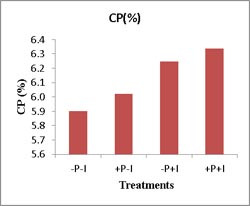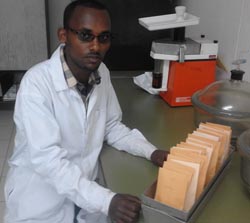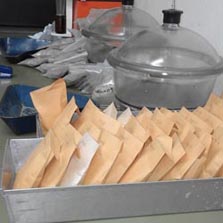In Ethiopia where the mixed crop-livestock system is a predominant feature in agriculture, promotion of improved production technology is expected to boost grain legume production with a concomitant increase in the amount of legume residues for livestock feeding.
| N2Africa is also considering the effect of improved grain legume production on livestock feed. On-farm trials are currently underway to demonstrate to farmers the effect of phosphorus (P) fertilizer and inoculants (I) application on grain and straw yield of four target grain legumes (faba bean, common bean, chickpea and soyabean) across four target regions in Ethiopia. This has created an opportunity for me to conduct my MSc research project on assessing the effects of these treatments on the yield and feed quality of the residues of these grain legumes in ongoing on-farm trials. Preliminary results shows (Fig. 1) that combined application of P and I increased % CP (crude protein) contents reflecting improvements in the feed quality of the residues for livestock feed. As part of the study, assessment of farmers’ perceptions on alternative uses of grain legumes straw (feed, soil mulching and fertility, for household energy etc.) is underway. |
Fig. 1: Crude protein (CP) content of common bean straw grown with and without inputs (P and I) |
|
Photos: Legume straw sample processing and analysis for quality parameters @ ILRI Lab |
Overall, the output of this study is expected to show that promotion of improved legume production technology will also enhance livestock production, thus contributing to income diversification of the smallholder farmers by fostering the multiple uses of whole plant.
By Sisay Belete (N2Africa funded MSc student at Hawassa University)



